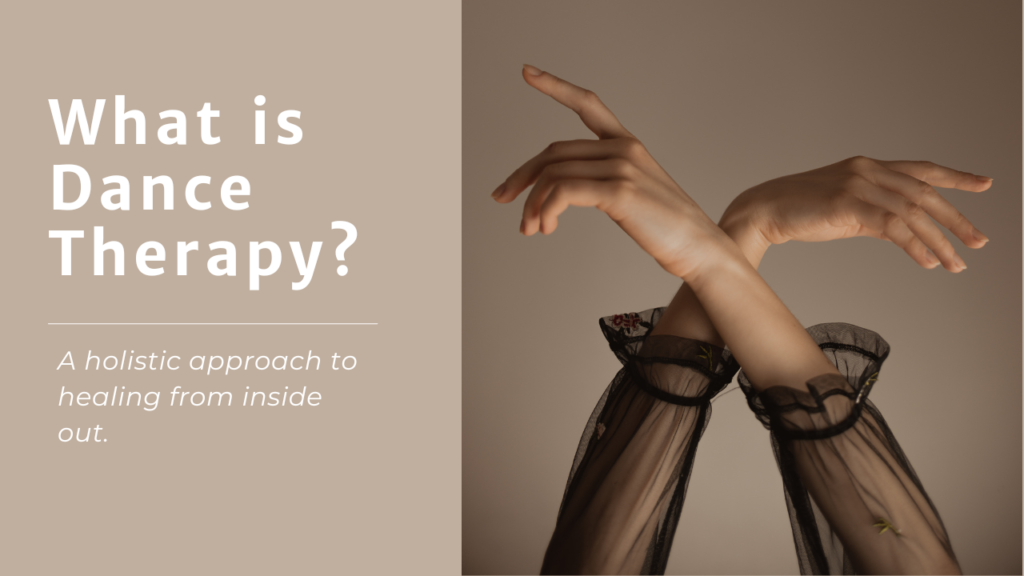Dance therapy is a personal way to learn about yourself, real time, while you are…dancing. It offers a space for you to check into the current state of your mind and body. It also educates ways to improve the manners that help you deal with the reactions inside of you as you coordinate your body parts, process your thoughts, regulate your emotions and manage your spatial relationships with others to maintain safety and sensitivity, naturally.
Dance therapy heightens your sense of awareness. It is only through an awareness of yourself and the things that need to be adjusted can we then make necessary changes. Done well and promptly, it can immediately change the way you feel mentally, emotionally and physically!
The objectives of dance therapy is not so much the dance itself but the process of learning and the person doing it – You. Hence, it is focused on how you are connecting the sequence of movements and what kind of force you are applying whilst having a particular attitude, conscious or not. And as we refine that process of movement through either the improvement of the body connectivity or the quality of movement, there is a tangible body that can be accessed to positively impact the mind, the intangible one.
Dance therapy can be used for various purposes and reasons. From overcoming bodily concerns such as stiffness and pains to personal issues of mental health and relationship matters. Done on a larger scale, it can dissolve the segregation of diverse groups from genders, colours, religious communities to even geography as ALL would share an experience that unites and transcends barriers – mind, body and spirit.
The history of "Dance Therapy".
Dance therapy has roots from the 19th Century modern dance movement where the ballet conventions were protested against and and the idea of dance is seen not just as entertainment but as a way to communicate and express oneself. Leading this wave was Isadora Duncan and her contemporaries.
By the mid of 20th Century, modern dance has developed into a response to sociopolitical themes and other major events. Such evolution laid foundation to the emergence of pioneers of dance therapy such as Marian Chance, Mary Whitehouse, and Trudy Schoop. Being professional dancers, teachers and choreographers they understood the process of engaging dance from various levels and creative spaces that led to therapeutic outcomes. Consequentially, they formed a foundation for dance therapy known today as the American Dance Therapy Association (ADTA). Processes of Dance Therapy also included Laban Movement Analysis (LMA) to train the manners of observation, interpretation and the use of dance elements to facilitate the dance therapy praxis by certified movement analysts.
Today, various methodologies and frameworks from theories of psychodynamics to Gestalt are used. All dance therapists have a graduate training and are certified rightfully and accordingly.
How dance therapy was used in medical setting
Over the course of her dance journey, Marian Chace saw how dance could impact the person and shifted the focus of her work from aesthetics to kinaesthetics, from dance to the dancer.
It was 1942, her work got recognized and she was invited to work at St. Elizabeths Hospital in Washington, D.C., a federal psychiatric hospital for WWII casualties. She was made the first full-time dance therapist in 1947.
Principles of dance therapy
- Motion and emotion are interconnected
- Mind and body is not separate
- Embodiment through the kinaesthetic participation is valued more than just the external aesthetics of movement
- The dancer, instead of the dance, is the focus
- Balance between the inner and outer world is the aim
Benefits of dance therapy
- Improved health and wellbeing
- Impacts the holistic health: physical, mental, emotional and social health of the dancer
- Increased strength and flexibility
- Physio-emotional resilience
- Diseases prevention
- Mood enhancement
- Improved self-awareness
- Improved self-esteem
- Safe space for the expression of feelings.
Supportive of health issues below (non-exhaustive)
Physical Issues:
Chronic pain
Childhood obesity
Cancer
Arthritis
Hypertension
Cardiovascular disease
Mental Health Issues:
Anxiety
Depression
Disordered eating
Poor self-esteem
Posttraumatic stress
Fears and Phobias
Limiting Beliefs
Neuronal/Cognitive Issues:
Dementia
Communication issues
Brain Fog
Autism
Stroke
Social Issues:
Aggression/violence
Domestic violence trauma
Social interaction
Family conflict
Others
Stress
Cloudy mind
Coordination
Cognition
Reaction speed
Balance
Interpersonal relationship
Muscular tension
Post treatment for cancer
Hypertension
Diabetes
Parkinson’s disease
About the Author: Vincent Yong founded Dance Flow Therapy™ (DFT™), which is a unique form of Dance Therapy based on his research and practice of Flow for more than four decades. DFT™ is a somatic practice translated from his book “Flow-The Art of Creating Abundance”.
DFT™ is an interdisciplinary approach towards self-love and empowerment. Applying the best practices from professional dancing, somatic movement therapy, Laban Movement Analysis, Neuro-linguistic Programming, Engineering and many more, DFT™ is created to positively change lives in the most natural and artful way.

